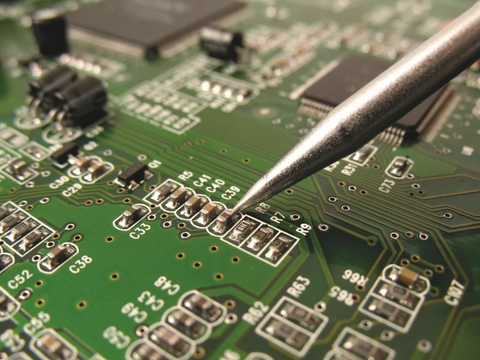
Next-generation connectivity
contact us

Recent technological advances have led to industry-wide discussions on the importance of next-generation connectivity and its role in future-proofing tomorrow’s vehicles. Lenora Clark, director specializing in autonomous driving and safety technology, discusses this key trend and how it will affect the automotive industry moving forward.

It is an exciting time for the automotive sector, as innovative new electronics and designs are changing the landscape and consequently, the future of driving. This is good news for the advanced driver assistance systems (ADAS) market, which is leading the way in developing reliable, intuitive devices – enabling faster, more efficient in-vehicle technology.
As consumer demand grows for a more seamless driving experience, there is increasing pressure on OEMs and Tier 1s to advance the technology even further amid rising competition in the automotive market. Next-generation connectivity, therefore, could be key to progressing ADAS technology, as the industry continues in its quest for the ‘future car’.
The term ‘next-generation connectivity’ refers to the extension of digital technology to help enhance the user experience in vehicles through quicker connectivity of devices. In the automotive space, ADAS forms a significant part of this innovation, with advances gradually paving the way towards a higher level of automation – or the so-called ‘future car’.
Although a level 5 in autonomous driving – where the occupants do not have to interact with the vehicle – remains yet to be achieved in the automotive industry, plenty of important progress has been made in recent years. For example, ADAS features, such as cameras and blind spot assistants, are now seen as a standard configuration for most cars and have paved the way for the adoption of level 3 automation in some lightweight consumer vehicles, as well as the introduction of self-driving delivery vehicles.

Connectivity, both within the vehicle and with others on the road, will be key to meeting this significant automation milestone. Each car has a different experience and increasing connectivity allows them to learn from each other and improve future interactions to everyday scenarios.
Clark notes that ultimately, innovating with automation is a continuous learning exercise and the technology is advancing all the time.
Following recent global events, there may be concerns about innovation slowing in the automotive industry. However, with more people working from home, there will likely be huge improvements to the 5G and telecommunications market, which in turn, could benefit the automotive sector1. The outlook for next-generation connectivity, therefore, is not showing any signs of slowing down. Many feel that 5G will be the main enabler of fully autonomous vehicles, with companies such as Deutsche Telekom installing 5G networks on all key transportation routes to aid development.
With expertise in next-generation circuitry and joining technology, we can take products through from the design phase to the application – to streamline the process across the whole supply chain.

As vehicles become increasingly connected, however, it raises further questions on how to provide reliable, safe products while ensuring a consistent vehicle performance. Integrating several different, complex systems into one vehicle can prove challenging, as signals for connectivity can interfere with radar sensors.
Close attention to electromagnetic shielding is important for design and proper function of all systems so that they can work together synergistically and not cause interference of each other. Increasing the functionality of the electronics also requires significantly more processing power, leading to increased operating temperatures of components, which could potentially cause long-term damage.

Material choice is therefore crucial to ensure the different systems work together in concert and ensure products stand the test of time. But with the automotive landscape changing rapidly, taking a more traditional, tactical approach to product design may not be the most effective method.
As Clark explains, “By adopting a more holistic approach to material and solution selection, OEMs and Tier 1s can benefit from a 360° view across all material performance and interactions. With more efficient connectivity, vehicles can interact more safely with the environment around them, potentially helping to reduce the number of traffic incidents.” Emerging evidence also suggests that enhanced traffic efficiency could even reduce fuel consumption – a clear cost benefit that could be passed on to consumers2.
So, where will these advances take the industry next? While the automotive sector is progressing to reach the idea of the ‘future car’, these recent technological leaps highlight how much progress has been made to allow manufacturers to meet changing consumer trends. As next-generation connectivity continues to be prioritized, collaboration across the supply chain will likely become more important to help bring products to market quicker and help OEMs and Tier 1s gain a competitive edge.
Collaboration is key to our operations at MacDermid Alpha Electronics Solutions. We bring extensive experience across a range of market sectors and apply this in-depth understanding to the automotive market – for a more holistic approach to material selection from the start of the design process.
Our in-depth knowledge of these wide-ranging technologies, including automotive, telecommunications and handheld devices, gives us a unique perspective on the future of vehicle electronics, to ensure OEMs and Tier 1s stay ahead of the latest trends. With expertise in next-generation circuitry and joining technology, we can take products through from the design phase to the application – to streamline the process across the whole supply chain.
Interested in finding out more about our ADAS enhancing technology? Visit our safety systems pages.
1) Telekom, ‘5G network as foundation for autonomous driving'
2) United States Environmental Protection Agency, Driving more efficiently